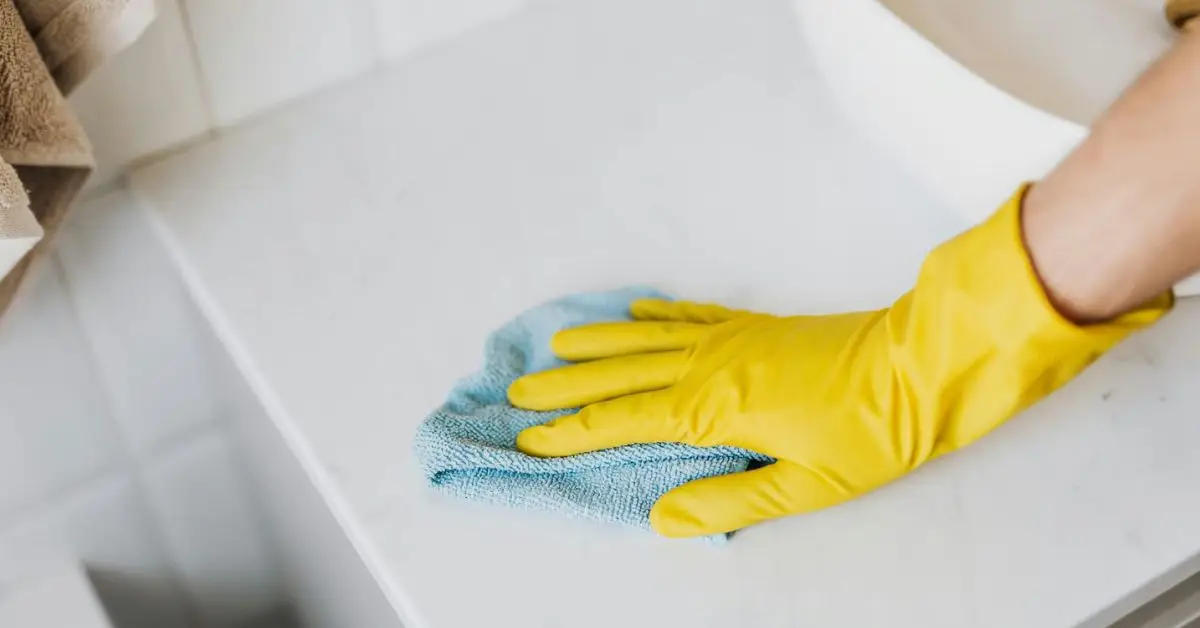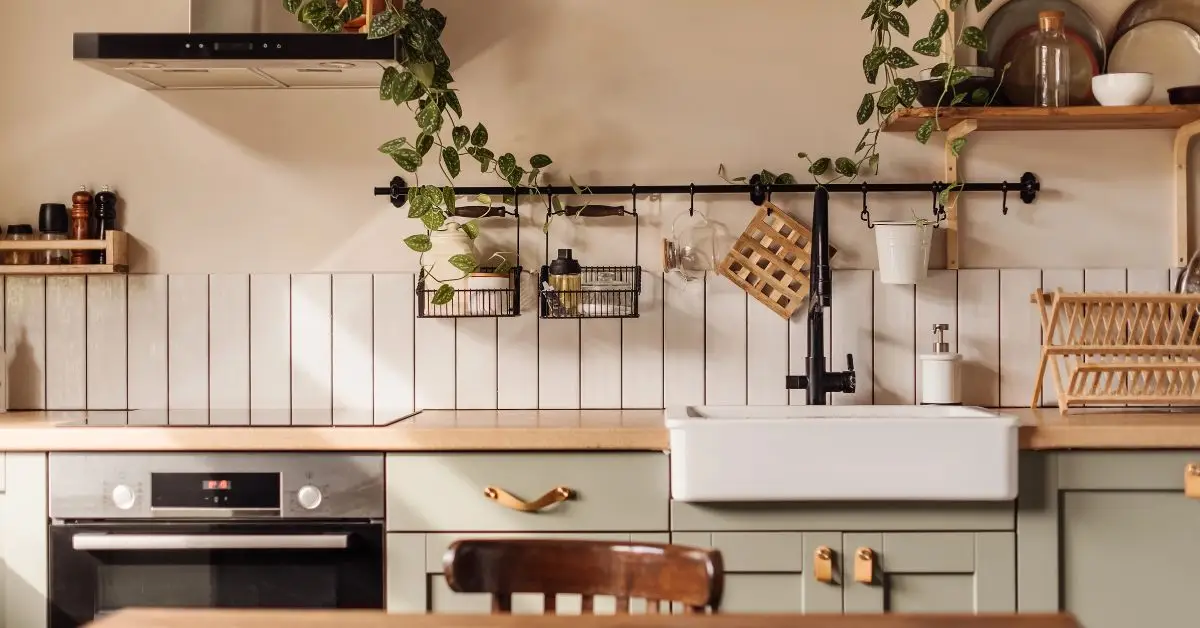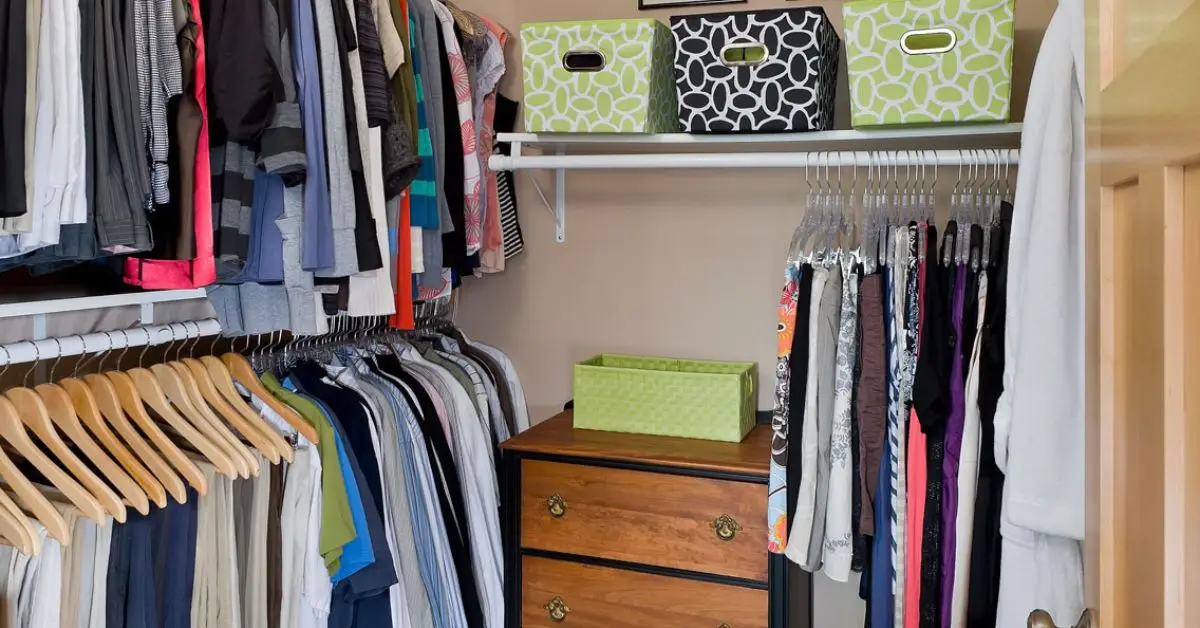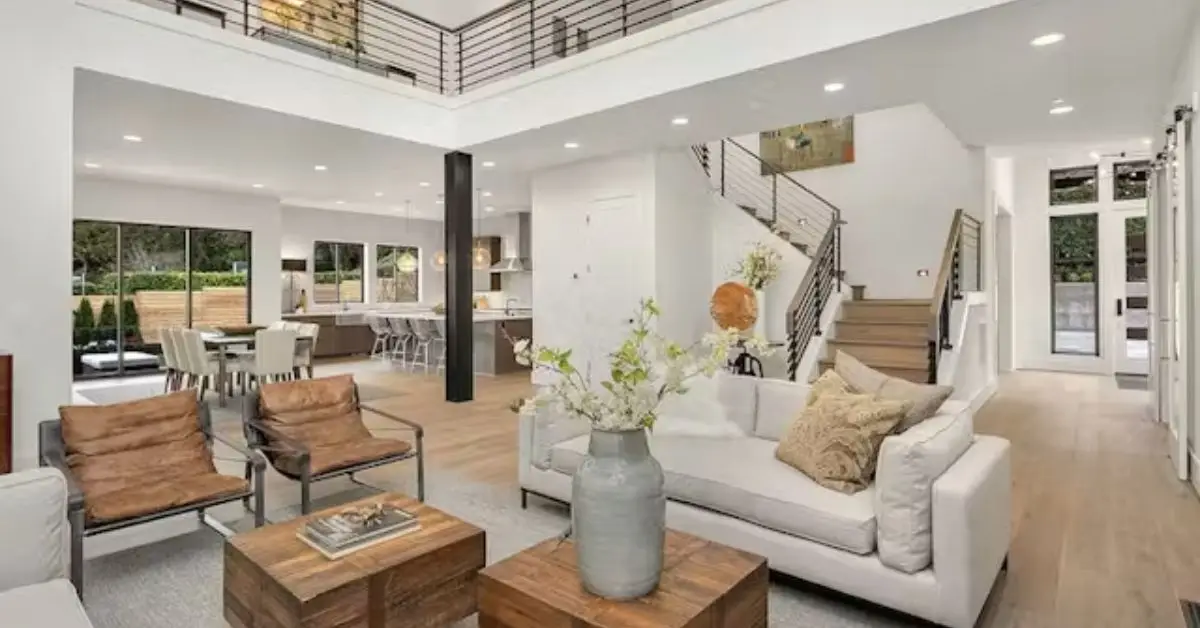6 Quick Decluttering Tricks for Every Room in Your Home
Let’s be honest—decluttering sounds simple until you’re staring at five junk drawers, a chaotic kitchen, and clothes you haven’t worn in three years. I’ve been there. You want your space to feel calmer, but the idea of doing the whole house at once? Overwhelming.
That’s why I always recommend going room by room.
It’s faster. It’s less emotionally exhausting. And best of all? You start seeing real progress—fast.
In this guide, I’m breaking down six room-by-room decluttering hacks that actually work. No fluff, no Pinterest-perfect promises. Just real systems I use with clients who are short on time but serious about results.
By the end of this, you’ll know exactly where to start, what to skip, and how to keep your home clutter-free without losing your mind.
Let’s dig in.
Why Room-by-Room Decluttering Actually Works (When Whole-House Doesn’t)
If you’ve ever tried to declutter your entire house in one weekend, you already know—it doesn’t end well. You start strong, but somewhere between the kitchen drawers and your overflowing closet, the motivation dies. That’s not a willpower issue. That’s a strategy issue.
Here’s why the room-by-room approach works better:
- It gives you quick wins. You can finish a small bathroom or entryway in under 30 minutes. That progress builds momentum—and momentum matters more than motivation.
- It keeps decision fatigue in check. Sorting through sentimental items, papers, or clothes all at once? Mental overload. But when you isolate each category by space, the decisions feel smaller, easier, and less emotional.
- You see visible change, faster. A decluttered living room feels like a reset. It’s motivating. A halfway-clean home with mess in every room? That’s just frustrating.
Most blogs gloss over this, but real-world decluttering fails not because people don’t care—it’s because they try to do too much, too fast, without a structure.
This method gives you the structure.
You focus fully on one zone at a time. You reset it. You move on. No bounce-back clutter. No overwhelm.
This is what I teach clients who work full time, raise kids, and can’t afford to spend three days in chaos. It works because it’s built for real life—not some Pinterest fantasy.
Want to take this further?
Consider this: Which room would make the biggest difference to your day if it felt calm and clear? That’s where you start.
Prep Right, or Burn Out Fast: How to Set Yourself Up for Decluttering Success
Before we jump into the actual rooms, let me tell you something most people skip—and regret later.
Decluttering without a simple plan is like grocery shopping hungry. You end up tired, frustrated, and surrounded by a mess that somehow got worse.
Here’s what actually helps before you begin:
1. Decide the order now—don’t wing it later
Pick 2–3 rooms or zones you’ll focus on first. I usually start with the bathroom (fast win), then move to kitchen counters, then a closet. Why? They show visible progress and get daily use. The win feels real.
2. Gather your tools in advance
Skip the over-complicated printables. Just grab:
- 3 large bags or bins: Keep, Donate, Toss
- A laundry basket (for misplaced stuff that belongs elsewhere)
- A timer (20–30 minutes per session max)
You’re not Marie Kondo’ing. You’re making room to breathe.
3. Set ground rules with your future self
You’ll get stuck in decision spirals unless you define simple rules like:
- Haven’t used it in a year? Donate.
- If I saw this in a store today, would I buy it again?
- Is it worth the space it takes up?
These questions save hours—and arguments with yourself.
4. Clear one small surface first
Start with a flat surface—counter, dresser, nightstand. Finish it fully. That one small win will quiet the mental chaos more than you think.
Most guides overload you with labels, bins, and storage tips upfront. That’s noise. You don’t need Pinterest bins. You need clarity and momentum.
Get your tools, your plan, and your mindset ready. Then you’re not just cleaning—you’re resetting how your space works.
Room 1 – The Bathroom Reset: 15 Minutes to a Clean Start
If you’re overwhelmed by clutter, the bathroom is the perfect place to start. It’s small, mostly functional, and rarely tied to emotional items. In 15–20 focused minutes, you can clear out more than you think—and feel like you’re finally making progress.

Nourishing Minimalism
What to do, step-by-step:
1. Clear the counters completely
Wipe them down and only put back what you actually use daily—maybe a toothbrush, face wash, and hand soap. Everything else? Drawer or trash.
2. Dump the half-used bottles
You don’t need five hotel shampoos and the dried-out face mask from last year. Toss what’s expired, leaking, or forgotten.
3. Check your medicine cabinet
Remove anything expired or unused. Old meds can be dropped off at a pharmacy or official disposal site—don’t flush them. Here’s how to safely get rid of medications according to the FDA.
4. Contain like with like
Group items by category: skincare, first-aid, makeup, dental, etc. Even a couple of small boxes or drawer trays can cut down on the visual noise.
5. Quick win: Under the sink
This is a classic clutter trap. Remove everything. Only put back what you actually need. Cleaning supplies you never use? Out.
Why start here?
Because bathrooms aren’t sentimental. You won’t get stuck wondering if you “might need this someday.” You just clear, toss, reset. And that little win gives you proof—you can do this.
Ready to tackle the next room? We’ll hit the kitchen next—where clutter shows up daily and affects your energy more than you realize.
Let me know if you want me to move ahead.
Room 2 – The Kitchen: Clear Counters, Clear Mind
Kitchens are emotional. They’re the heart of the home—but they also collect clutter faster than any other room. Mail piles, unused appliances, mystery Tupperware lids… sound familiar?

Let’s change that.
This isn’t about getting it “Instagram clean.” It’s about making the space work for how you actually live.
What to focus on first:
1. Clear your main prep surface
Pick one counter area you use most (maybe near the stove or sink). Remove everything. Only put back the essentials—cutting board, oil, maybe salt and pepper. That’s it.
2. Do the 5-minute appliance audit
If you haven’t used the juicer, rice cooker, or air fryer in six months, move it to a cabinet—or donate it. Counter space is premium real estate.
3. The Tupperware trap
Match every lid to its container. If it doesn’t match, toss it. If you have more than 10, scale back. It’s not wasteful—it’s reclaiming sanity.
4. Group things by action
Create small “zones”: a coffee station, a baking bin, or a quick-meals drawer.
5. Don’t forget the fridge
You’re not deep cleaning—just scan for anything expired, sticky, or clearly dead weight. Do this once a week and clutter won’t build up again.
A clean kitchen feels like you’re back in control of your day. It helps with meal prep, lowers stress, and even cuts down on takeout spending—because you can actually see what you have.
Next up, we’ll hit the bedroom closet—one of the most emotionally loaded zones in any home, and where decision fatigue peaks.
Ready to keep going?
Room 3 – The Bedroom Closet: Cut the Chaos, Keep What You Wear
Let’s be real—closets are where good intentions go to die. We hold onto clothes that don’t fit, don’t suit us, or never really did. It’s part identity, part guilt, part “maybe one day.”

But here’s the truth: most people wear 20% of their clothes 80% of the time.
So let’s simplify.
Start with this mindset shift:
You’re not getting rid of clothes. You’re choosing what deserves space in your everyday life.
The 20-minute closet reset:
1. Pull out your daily rotation first
Pick the 15–20 items you actually wear week to week. Hang them at the front. These are your real wardrobe.
2. Identify the “meh” pile
If you wouldn’t wear it tomorrow, try it on today. Doesn’t fit? Feels off? Into the donation pile. Fast decisions only.
3. Handle the sentimental stuff separately
One small bin for memory items. That’s it. Don’t let nostalgia hold your closet hostage.
4. Don’t over-organize (yet)
You don’t need color-coded velvet hangers. Just group by type—shirts, pants, dresses. Done.
5. Watch for hidden clutter types
Unworn shoes. Accessories buried in drawers. That dry-clean-only dress you’ve skipped for five years. These items drain more than space—they create daily decision fatigue.
If you want a real-world way to decide what stays, try the hanger flip trick made famous by stylists: flip all hangers backward; after wearing something, rehang it normally. After 30 days, donate what’s still untouched.
When your clothes are intentional, your mornings feel easier. You spend less time deciding, and more time feeling like yourself.
Up next: the living room, where clutter gets dumped fast—but cleared even faster with the right system.
Want to keep going?
Room 4 – The Living Room: From Drop Zone to Calm Zone
The living room often turns into a catch-all. Remote controls, mail, kids’ toys, random chargers—it all lands here. And because it’s a shared space, clutter builds up fast and silently becomes part of the background.

But this room sets the emotional tone for your home. When it’s clean, the whole place feels lighter. Seasonal clutter often builds up here too—so if you’re heading into colder months, here are 10 ways to winter-proof your home without calling in a pro.
Let’s simplify it without overdoing it.
Here’s your 20-minute reset plan:
1. Clear all flat surfaces
Coffee tables, side tables, media stands—clear them fully. Wipe them down. Then decide what actually needs to live there (hint: it’s less than you think).
2. Create a “home base” for loose items
Get one tray or small box for essentials: remotes, chargers, coasters. That alone can reduce visual clutter by 50%.
3. Deal with incoming clutter
Designate a spot for mail, bags, or stuff that tends to land here. A small basket near the entrance works better than pretending it’ll never happen again.
4. Rethink decor and storage
Too many shelves and knick-knacks? It might look curated, but feel chaotic. Visual noise can be just as exhausting as physical clutter—especially in shared spaces.
5. Add a reset habit
At the end of each day, set a 5-minute timer. Everyone in the house does a quick “room reset”—blankets folded, items returned, surfaces cleared. It’s a game-changer.
You spend a lot of time here—resting, connecting, zoning out. When it’s visually clear, your mind feels clearer too. Plus, guests notice the living room first. A tidy space says “calm” before you even say hello.
Next up: the entryway, a small but powerful space that either welcomes you home or stresses you out before you even take off your shoes.
Room 5 – The Entryway: Control the Clutter Before It Enters
The entryway is small, but it sets the tone. It’s the first thing you see when you walk in—and the first place clutter dumps itself. Shoes, keys, backpacks, receipts… and before you know it, the stress starts before you’ve even taken a breath.
A tidy entry gives you a moment of calm the second you walk in.
Here’s how to fix it in under 15 minutes:
1. Remove anything that doesn’t belong
That pile of junk mail? Toss it. That umbrella you haven’t used in 6 months? Relocate. Keep this space tight and purposeful.
2. Create a “grab and go” zone
Designate one small container or tray for essentials: keys, wallet, ID card, sunglasses. Anything beyond that is visual noise.
3. Add a shoe limit
Don’t let every pair live at the door. One per person, max. The rest go in closets. This one rule makes a huge difference.
4. Install vertical storage
A few hooks or a slim wall shelf can keep bags, dog leashes, or masks off the floor.
5. Make it welcoming
A small mat, one plant, or a clean light fixture can make this space feel intentional—not just a dumping ground.
This space either adds calm or chaos to your day. When it’s clean and streamlined, you feel ready to relax the moment you step inside. And even small entryways can be powerful if they’re set up with care.
Room 6 – The Home Office (or Work Corner): Clear Desk, Clear Head
Whether you work from home full-time or just need a space to pay bills and check email, the home office tends to attract silent chaos. Paper piles, tech clutter, cords, sticky notes, forgotten mail—sound familiar?
This space doesn’t need to be fancy. It just needs to function without draining you.
5 simple steps to reset your work zone:
1. Start with the surface
Clear everything off your desk or table. Wipe it clean. Only put back the non-negotiables: laptop, notepad, pen, maybe a lamp.
2. One-touch paper rule
Pick up each paper once and decide—trash, file, or action. Don’t move stacks around. Finish them.
3. Contain the tech mess
Gather all chargers, cables, USB drives. Label what you need, box what you don’t. Even a $10 cable box can keep things tidy and save you hours of untangling.
4. Create a “focus zone”
This isn’t just about looks. Remove anything that distracts—extra mugs, snacks, visual clutter. Your mind mirrors what’s around you.
5. Make a digital declutter plan
Unsubscribe from email lists, clean up your desktop, close unused tabs. A messy digital space creates the same kind of stress as physical mess—it just hides better.
You don’t need a full room. Even one cleared table and one drawer can change how focused and calm you feel. If your workspace is set up in the garage—or even just your storage zone needs airflow—these affordable garage cooling hacks can make a surprising difference. It’s not about the size of your workspace—it’s about the clarity it gives you.
Keep It From Coming Back – Real Habits That Actually Stick
Decluttering your home feels amazing—but if you’ve done this before, you know how quickly the mess creeps back in. A few busy weeks, a couple of rushed mornings, and boom—you’re back to digging for your keys under a pile of unopened mail.
The solution? A few low-effort habits that actually work in real life.
1. The 5-Minute Daily Reset
Pick a time—before bed, after dinner, whatever works—and spend five minutes putting things back. Not cleaning, not organizing. Just resetting. One surface, one basket, one small win at a time.
2. One in, one out
Bought new shoes? Donate an old pair. New mug? Out goes the chipped one. This is the simplest way to maintain balance without ever needing a “big clean-out.”
3. Don’t save what you’ll never use
That “just in case” clutter? It rarely gets used. Keeping too many options (even socks!) can mentally drain you. Clarity creates energy.
4. Involve the people you live with
Make it collaborative, not controlling. Kids? Use simple systems (one toy bin). Partner? Agree on key shared spaces to keep clear. It’s not about perfection—it’s about peace.
5. Celebrate the space you’ve made
Cluttered homes hide joy. Clean spaces invite it back in. Light a candle. Put out flowers. Sit and enjoy your room. You didn’t just clean—you reclaimed how your space feels.
Decluttering isn’t a one-time event. It’s a mindset—and a few small systems that help you stay in control without burning out. You’ve done the hard part. Now it’s just about keeping what works and letting go of what doesn’t.
You Don’t Need a Perfect Home—Just One That Works for You
If you’ve made it this far, take a second to recognize this: you’re doing the work most people keep putting off. Not just clearing spaces—but changing how your home feels day to day.
The goal isn’t minimalism. It’s clarity. You want to walk into each room and feel like it serves you—not the other way around.
Start where it feels easiest. Stick to short, focused sessions. Let go of guilt, “shoulds,” and the pressure to get it all done at once. Progress in one room builds confidence for the next. If you’re a new homeowner trying to get organized, don’t miss this guide on 5 maintenance musts to handle after buying a home—these basics help you protect your space before the clutter even starts.
Want more simple home reset ideas? Visit Build Like New for practical, real-world tips to make your home feel lighter—room by room.
Disclaimer: This content is for informational purposes only and is not a substitute for professional organizing, mental health, or financial advice. Always consider your personal needs and consult relevant experts when necessary.


